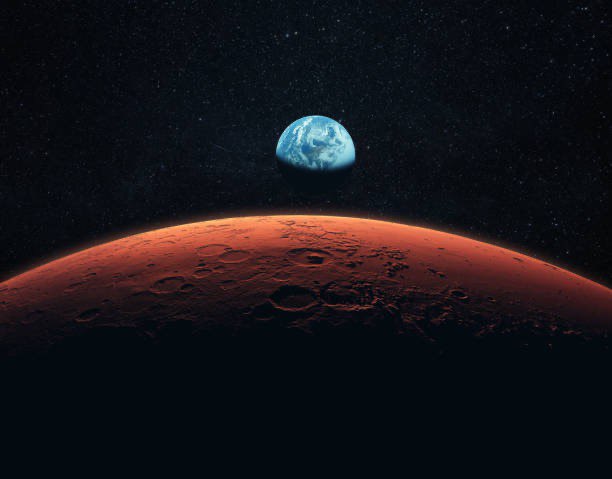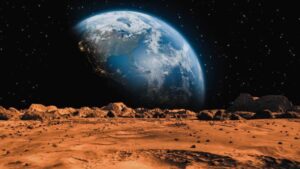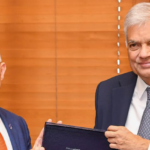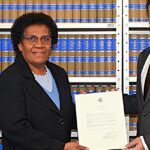
Radiation and Space
Notice: Test mode is enabled. While in test mode no live donations are processed.

During long-duration space flights, astronauts must be protected from the harmful effects of galactic and solar cosmic rays. In our time, the relevance of protecting the human body from the radiation of outer space is increasing and remains an urgent problem for science. Obviously, a flight to the Moon and Mars is the next task in space exploration: NASA’s Artemis 3 program (plan for 2025), Elon Musk’s Starship will go to Mars in 3-4 years (International Astronautical Congress in Baku, October, 2023), successful lunar missions of satellites from China and India this year. All this is evidence that man has come close to the threshold of long-term space flight and the creation of stationary bases on planets.
The radiation situation for astronauts during long-term space flights is due to the impact of low-intensity radiation of galactic and solar cosmic rays on the spacecraft. It is necessary to have radiation countermeasures available for the spacecraft to protect astronauts (PHARMACOCHEMICAL PROTECTION IN FAR SPACE: MODERN VIEW.I.B. Ushakov, M.V. Vasin . A.I. Burnasyan Federal Medical Biophysical Center of Federal Medical Biological Agency) During 6 months in space, an astronaut is exposed to radiation equal to 1000 chest X-rays. A feature of irradiation in outer space is the impact of several types of radiation. Exposure to radiation and other factors of spaceflight puts a person at risk of developing cancer, damage to the central nervous system, bone loss, and some cardiovascular diseases (NASA-Funded Space Radiation Research Fights Cancer on Earth).
Participants of the flight to the Moon and Mars will have to perform complex and diverse tasks related to the deployment, launch, and adjustment of life for people and the equipment of the planetary base. With this activity, the influence of all the factors of the cosmos on a person is likely to increase. Human aging, as a biological process, is one of the main targets that will be targeted by long-term cosmic radiation. To date, the experience of people working in conditions of a long-term stay in space is 438 days (the MIR orbital station, 1995), but it is necessary to take into account the detail that the orbital stations are protected by the earth’s magnetic belt, which reduces the strength of cosmic radiation, and the flight to Mars will be carried out in outer space and will take from 6 months
An important and obvious aspect of the flight problem is the limited space and physical inactivity for the crew members. A decrease in muscular work, intensified by continuous exposure to cosmic rays, is a dangerous “cocktail” from the point of view of oncogenesis. Today, there is evidence from studies that determine the link between physical activity and cancer. Muscle weakness in astronauts after a flight is the subject of attention of specialists. The therapeutic and prophylactic component in the preparation, provision of the flight and post-flight rehabilitation should have a complex of physical exercises, special nutrition that meets the needs of the body’s cells in flight conditions and take into account the likelihood of breathing with a depleted breathing mixture.
Despite the progress of science and technology, the successful use of ionizing radiation in various areas of human life, including space exploration, today scientists still do not have a full understanding of the nature of the effect of radiation on humans. And in particular, there is a lack of information about the effects of radiation on the body over a long period of time. Radiation research is continuous, complex, informative and at the same time increases the need for knowledge.
A long-duration flight into space, the creation of stations on the Moon and Mars will take place tomorrow, and the problem of protecting a person from radiation during a long-term stay in space is still being solved. This problem cannot be solved without understanding the maximum number of aspects of the impact of radiation on the human body.
The Foundation’s experts have been conducting research for several decades. The work is unique, as our scientists study DNA mutations of people who received radiation from various sources of radiation, during the explosions of atomic bombs in Hiroshima and Nagasaki, work with materials after the disasters of the Chernobyl nuclear power plant and the Fukushima nuclear power plant, the consequences of explosions at the Semipalatinsk Nuclear Test Site (SNT).
The history of tests at the Semipalatinsk nuclear test site deserves special mention. From 1949 to 1989, at least 468 nuclear tests, both above ground and underground, were carried out at this secret test site in Kazakhstan. Due to the explosions, hundreds of thousands of people were exposed to radiation for 40 years (UN, Global View. Human Destinies.29.08.2023) That is, people were not evicted from the test zone during the explosions, they lived then, they live now. Before the closure of the landfill, the end of the USSR and the independence of Kazakhstan, the population knew nothing about what was happening to them. To this day, people live there, lead their usual way of life, have families and children, and are constantly exposed to “chronic” radiation with low doses of radiation. The atomic bombings of Nagasaki and Hiroshima were the first in the world to provide a wealth of material to scientists who, from the first hours after the explosions, are still conducting research on generations of survivors. These trials require research, and the results of the effects should help people understand the effects of radiation on humans in the event of long-term exposure.
The research method is large-scale, it will cover the 1st, 2nd and 3rd generations of people exposed to radioactive contamination.
The long-term observations of our scientists on the radiation damage to people, in particular, from nuclear weapons, can be considered as a model of long-term space flight. We believe that our experience can help to develop effective methods of protection against radiation, and in particular protection against long-term exposure to radiation. Creation of a complex, in the sense of a “vaccine” against radiation.
Recent Entries
- COP28: Climate action can’t wait
- Breast cancer
- The day will soon come when cancer and cancer treatment will no longer be scary!? Hidden potential of instant grape seed ingredients that enhance the effectiveness of anticancer drugs and significantly reduce side effects
- Will we create a new stage in cancer research and treatment? What is Shunga Grape Seed Ingredients?
- August 29 – International Day against Nuclear Tests



